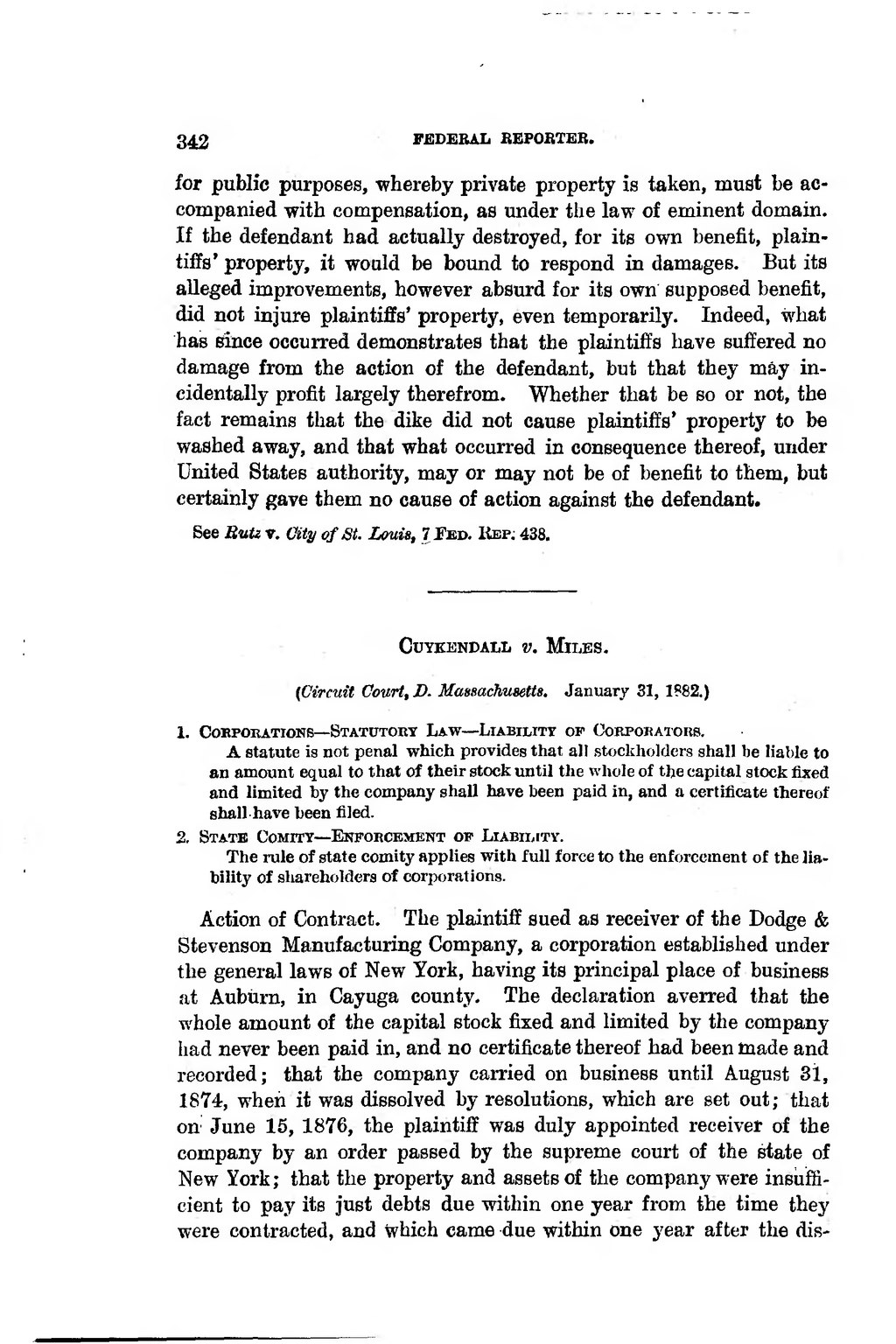342 PBDEBAL BEPOBTEB. �for public purposes, whereby private property is taken, must be ac- companied with compensation, as under the law of eminent domain. If the defendant had actually destroyed, for its own benefit, plain- tiffs' property, it woald be bound to respond in damages. But its alleged improvements, however absurd for its own supposed benefit, did not injure plaintiflfs' property, even temporarily. Indeed, what bas BInce occurred demonstrates that the plaintiffs have sufifered no damage from the action of the defendant, but that they may in- cidentally proiit largely therefrom. Whether that be so or not, the fact remains that the dike did not cause plaintiffs* property to be washed away, and that what occurred in consequence thereof, under United States authority, may or may not be of benefit to them, but certainly gave them no cause of action against the defendant. �See Bull v. City of St. Louis, 7:Fbd. Kbp. 438. ���CUYKENDALL V. MlLES. (Circuit Court, D. Massachusetts. January 31, 1?82.) �1. COHPOKATIONS— StATUTORY LaW — LlABILITT OF OORPOIiATOBS. �A Statuts ia not penal which provides that all stockholders shall be liable to an amount equal to that of thelr stock until the whole of the capital stock fixed and limited by the company shall have been paid in, and a certiticate thereof shall have been flled. �2. State Compty — Erforcbment oi" Liability. �The rule of state comity applies with f ull force to the enforcoment of the lia- bility pf shareholders of corporations. �Action of Contract. The plaintif? sued as receiver of the Dodge & Stevenson Manufacturing Company, a corporation established under the general laws of New York, having its principal place of business at Auburn, in Cayuga county. The declaration averred that the whole amount of the capital stock fixed and limited by the company had never been paid in, and no certifieate thereof had been made and recorded; that the company carried on business until August 31, 187e, when it was dissolved by resolutions, which are set out; that on' June 15, 1876, the plaintiff was duly appointed receiver of the company by an order passed by the supreme court of the state of New York; that the property and assets of the company were insufji- cient to pay its just debts due within one year from the time they were eontraeted, and Which came due within one year after the dis- ��� �
